Are you ready to experience the latest features and improvements of Android 14? If you have a Project Treble compatible device, upgrading to Android 14 is a breeze. In this guide, we’ll walk you through two methods for installing the latest Android operating system on your device: using either custom recovery or ADB Fastboot. Whether you’re a tech-savvy individual or a beginner, we’ve got you covered.
Before we get started, it’s important to note that we’ll be installing a GSI ROM. This type of ROM is designed to work on all Project Treble compatible devices. So, no matter what phone you have, you can upgrade to Android 14 with ease. Whether you choose to use custom recovery or ADB Fastboot, we’ll guide you through the process step by step, so you can enjoy the latest features of Android 14 in no time.
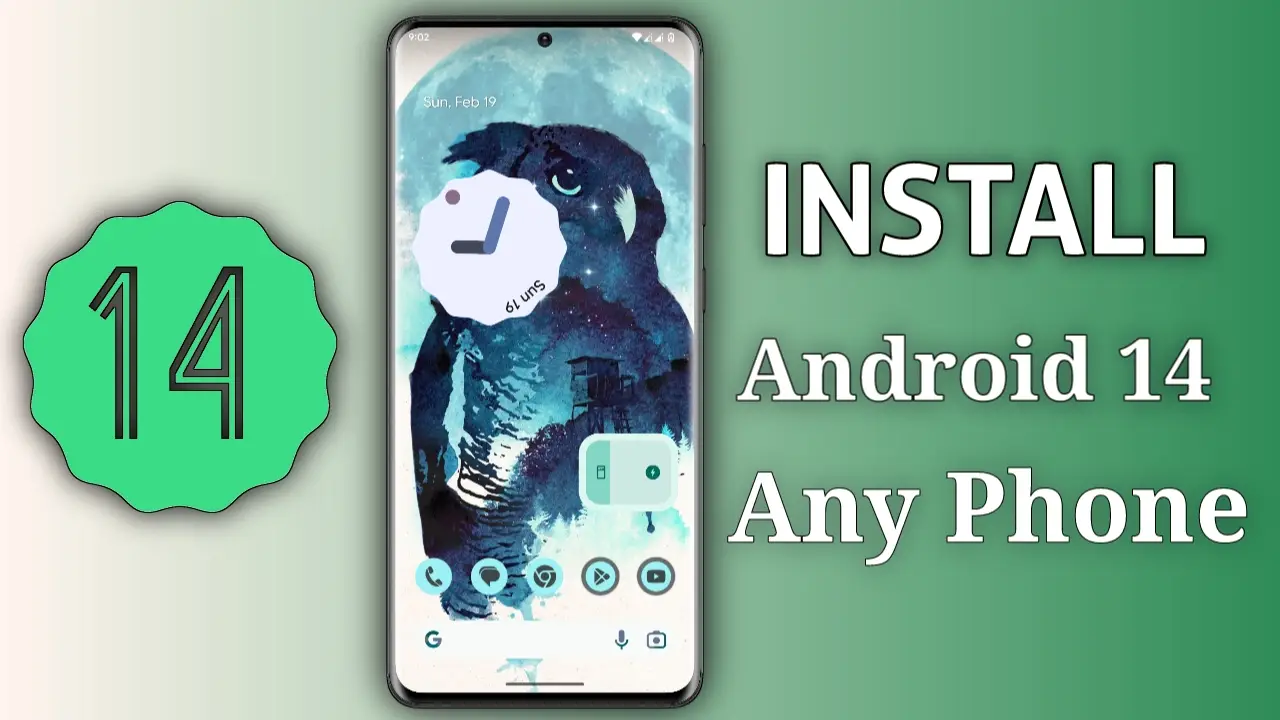
Table of Contents
What is GSI?
GSI, or Generic System Image, is a type of Android ROM that provides a pure and unmodified version of the Android operating system. It is built from the source code of the Android Open Source Project (AOSP) and can run on a variety of Android devices, regardless of the manufacturer. GSI ROMs do not include any customizations or modifications, making them a popular choice for developers and advanced users who want to experience the latest Android version on their devices.
What are Project Treble Phones?
Project Treble Phones are devices that are compatible with Google’s Project Treble initiative. This initiative makes it easier and faster for manufacturers to update their Android devices to newer versions of the operating system. Project Treble Phones receive updates more quickly than devices that do not support Project Treble.
How to Check if Your Phone Supports Project Treble?
Project Treble is a system-level initiative by Google to make it easier for manufacturers to update their Android devices to newer versions of the operating system. If your phone supports Project Treble, you can install newer versions of Android without having to wait for your manufacturer to release an update.
To check if your phone supports Project Treble, you can use the following steps:
- Download the “Project Info” app from the Google Play Store.
- Launch the app and tap on the “Images” tab.
- Look for the “Screen Message”.
- If your phone supports Project Treble, then you see also which file you should download.
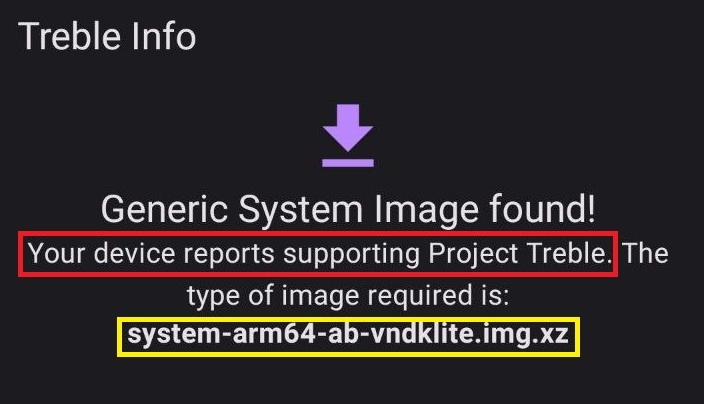
If your phone supports Project Treble, you can then proceed to install newer versions of Android.
Downloading Android 14 GSI
To install Android 14 on your Project Treble Phone, you will need to download the Android 14 GSI image. You can find the official and unofficial GSI ROMs for Android 14 on the web. Click on the download button below to visit a GSI ROM site and download the Android 14 GSI image for your device.
Once you have downloaded the GSI image, you will need to extract it use 7zip or another tool.
Installing Android 14 using a custom recovery
Custom recovery is an advanced tool that gives you more control over your device. It allows you to flash GSI ROMs, custom ROMs, kernels, and other mods. If a custom recovery is available for your device, we highly recommend using it to flash Android 14.
Before you begin, you must disable the force encryption on your phone. This can usually be done by flashing a “Disable Dm Verity Force Encrypt” zip file from your custom recovery. If your phone is encrypted, make sure to complete this step first.
Here are the steps on how to install Android 14 using a custom recovery:
- Power off your phone.
- Boot into custom recovery mode.
- In custom recovery, wipe the Dalvik Cache, Cache, System, and Data partitions.
- Install the Android 14 GSI system image.
- (Optional) Flash a custom kernel if available.
- (Optional) Flash a custom vendor if available.
- (Optional) Flash Magisk if desired.
- Reboot your phone.
Once your phone has rebooted successfully, you should now be running Android 14.
Installing Android 14 via ADB Fastboot Commands
ADB Fastboot is a powerful tool that allows you to control your Android device from a computer. You can use it to flash GSI ROMs, custom ROMs, kernels, and other mods. If you are comfortable with using the command line, ADB Fastboot is a great way to install Android 14 on your device.
Step 1: Download the necessary files
Download the necessary files from the links below:
SDK Platform Tool: SDK Platform Tool
Generic System Image (GSI): Download GSI
Verified Boot Metadata (vbmeta) Image: Download vbmeta
Step 2: Launching Command Prompt
- Extract the downloaded SDK Platform Tool.
- Opening the extracted SDK Platform Tool Folder.
- Launching Command Prompt from the Same Folder:
To execute commands for the SDK Platform Tool, you need to open a Command Prompt window from within the SDK Platform Tool folder. Follow these steps:
Windows: Open the extracted SDK Platform Tool folder. In the folder’s address bar (top bar), type “cmd” and press Enter. This will launch the Command Prompt window with the current directory set to the SDK Platform Tool folder.
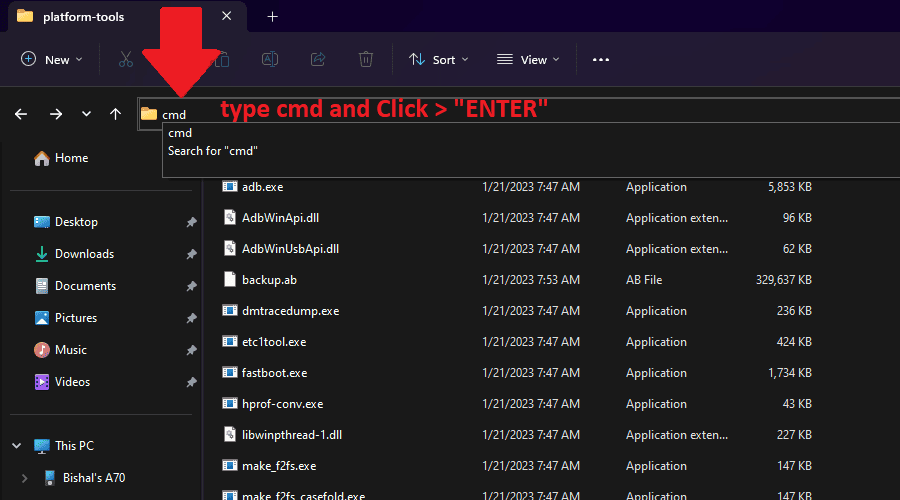
macOS and Linux: Open the Terminal. Use the “cd” command to navigate to the extracted SDK Platform Tool folder. For example, if the folder is on your desktop, you would use the command cd ~/Desktop/sdk-platform-tool. Once you’re in the correct folder, you can proceed with using the Terminal for SDK Platform Tool commands.
Step 3: Unlocking the Bootloader
In this section, we will be unlocking the bootloader on your Android device. This is a necessary step if you want to root your device, install a custom ROM, or use other advanced features. Please follow all of the steps carefully:
To enable developer options:
- On your Android device, go to Settings > System > About phone.
- Tap the Build number seven times.
- You will see a message saying that you are now a developer.
- Go back to Settings > System.
- Tap Developer options.
To enable OEM unlocking:
In Developer options, scroll down and find the OEM unlocking setting.
Tap the toggle switch to enable OEM unlocking.
You may be prompted to confirm that you want to enable OEM unlocking.
To enable USB debugging:
- In Developer options, scroll down and find the USB debugging setting.
- Tap the toggle switch to enable USB debugging.
- You may be prompted to confirm that you want to enable USB debugging.
Once you have enabled developer options, OEM unlocking, and USB debugging, you can proceed with unlocking the bootloader.
To unlock the bootloader:
Open a command prompt in the folder where the Android SDK Platform Tools are installed.
Type the following command and press Enter:
adb devicesThis will list all of the devices that are connected to your computer. If your Android device is connected, it should be listed in the output.
You may be prompted to confirm that you want to enable USB debugging.
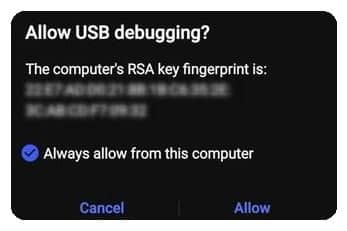
Type the following command and press Enter:
adb reboot bootloaderThis will reboot your Android device into bootloader mode.
Once your device is in bootloader mode, type the following command and press Enter:
fastboot flashing unlockThis will unlock the bootloader on your device.
Your device will reboot and the bootloader will be unlocked.
Note: Unlocking the bootloader will erase all data on your device. Make sure to back up your data before proceeding.
Step 4: Rebooting to Fastboot Mode
After unlocking the bootloader, your device will reboot. Once it has rebooted, you will need to reboot it back into fastboot mode in order to flash a custom ROM or other files.
To do this type the following command in the command prompt:
adb reboot fastbootThis will reboot your device into fastboot mode.
Here are some additional things to keep in mind:
- The adb reboot fastboot command may not work on all devices.
- If the adb reboot fastboot command does not work, you can try rebooting your device into bootloader mode manually by first power off phone and pressing and holding the Power and Volume down buttons at the same time until you see the bootloader screen.
Step 5. Disable vbmeta Verification and Flash vbmeta Image
Once your device is in fastboot mode, you can disable vbmeta verification and flash the vbmeta image with the following command:
fastboot --disable-verification flash vbmeta vbmeta.imgThe fastboot flashing disable-verity command will disable vbmeta verification, which is a security feature that prevents unauthorized modifications to the vbmeta image. The fastboot flashing vbmeta vbmeta.img command will flash the vbmeta image to your device.
Step 6. Rebooting to Fastboot Mode After Flashing vbmeta
Once you have successfully flashed the vbmeta image, you need to reboot your device back into fastboot mode in order to flash a custom ROM or other files.
To do this, type the following command in the command prompt:
fastboot reboot fastbootStep 7. Confirming That vbmeta Verification Is Disabled
Once you have rebooted your device back into fastboot mode, you can confirm that vbmeta verification is disabled by using the command fastboot getvar is-userspace.
To do this, type the following command in the command prompt:
fastboot getvar is-userspaceStep 8. Erase System Partition
Once you have confirmed that vbmeta verification is disabled, you can erase the system partition on your device. This will delete all of the data on the system partition, including the Android operating system.
To erase the system partition, type the following command in the command prompt:
fastboot erase systemStep 9. Delete Logical Partitions
Once you have erased the system partition, you can delete the logical partitions. The logical partitions that you need to delete will depend on the type of partition that you erased in step 8.
- If you erased the system_b partition in step 8, then you need to delete the product_b logical partition.
- If you erased the system_a partition in step 8, then you need to delete the product_a logical partition.
- If you only erased the system partition in step 8, then you need to delete the product logical partition.
To delete a logical partition, you can use the following command:
fastboot delete-logical-partition product_bfastboot delete-logical-partition product_afastboot delete-logical-partition productStep 10. Flash the System Image
Once you have deleted the logical partitions, you can flash the system image to your device. The system image is the core of the Android operating system, and it contains all of the essential files and drivers that your device needs to boot and run.
To flash the system image, you need to use the following command:
fastboot flash system system.imgStep 11. Reboot to Recovery
Once you have flashed the system image, you need to reboot your device into recovery mode. Then you can format the data and reboot to the normal Android operating system.
fastboot reboot recoveryRemember to replace placeholders like vbmeta.img, system.img, product_insertslothere, product_a, product_b, and product with actual filenames or partition names relevant to your device and ROM.
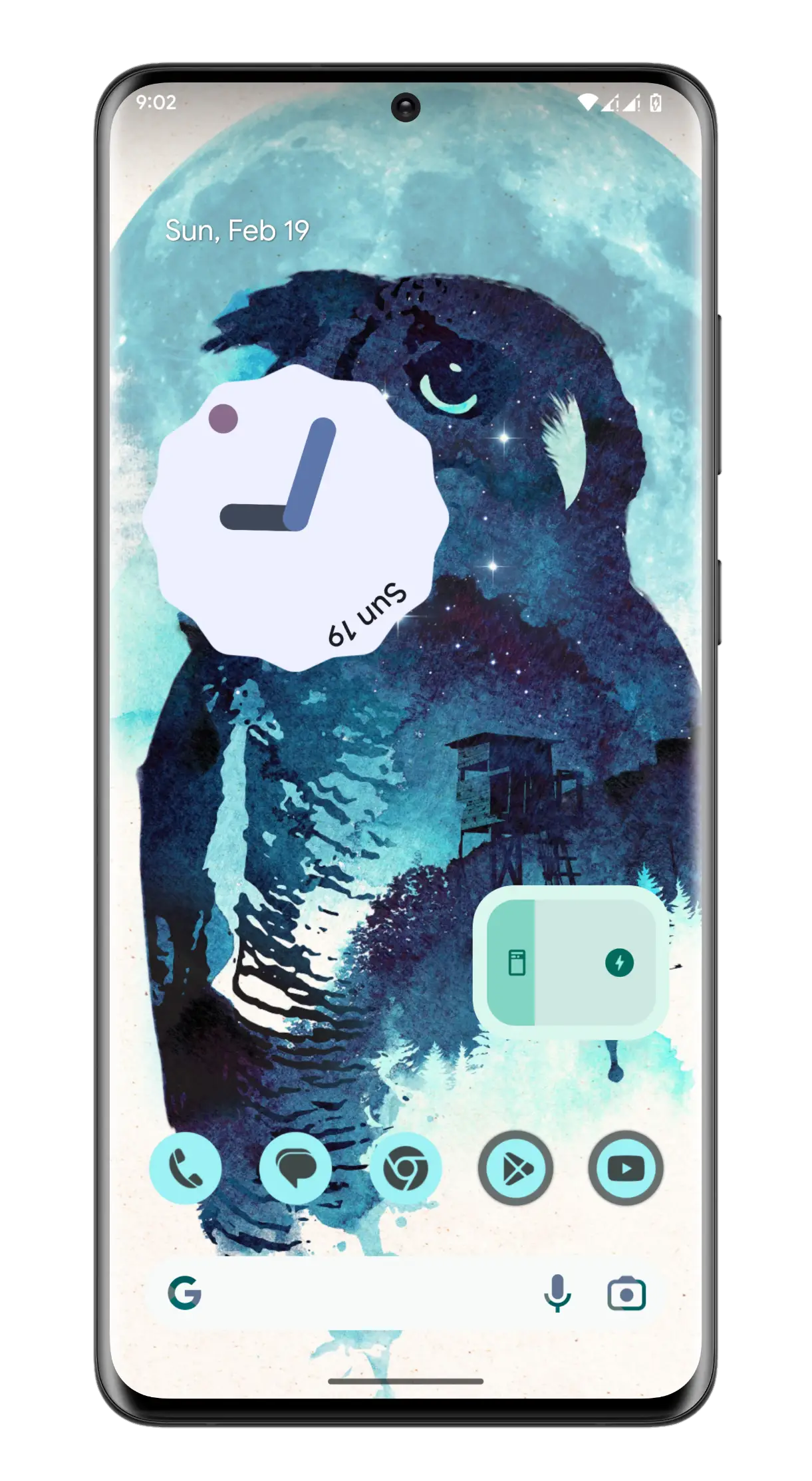
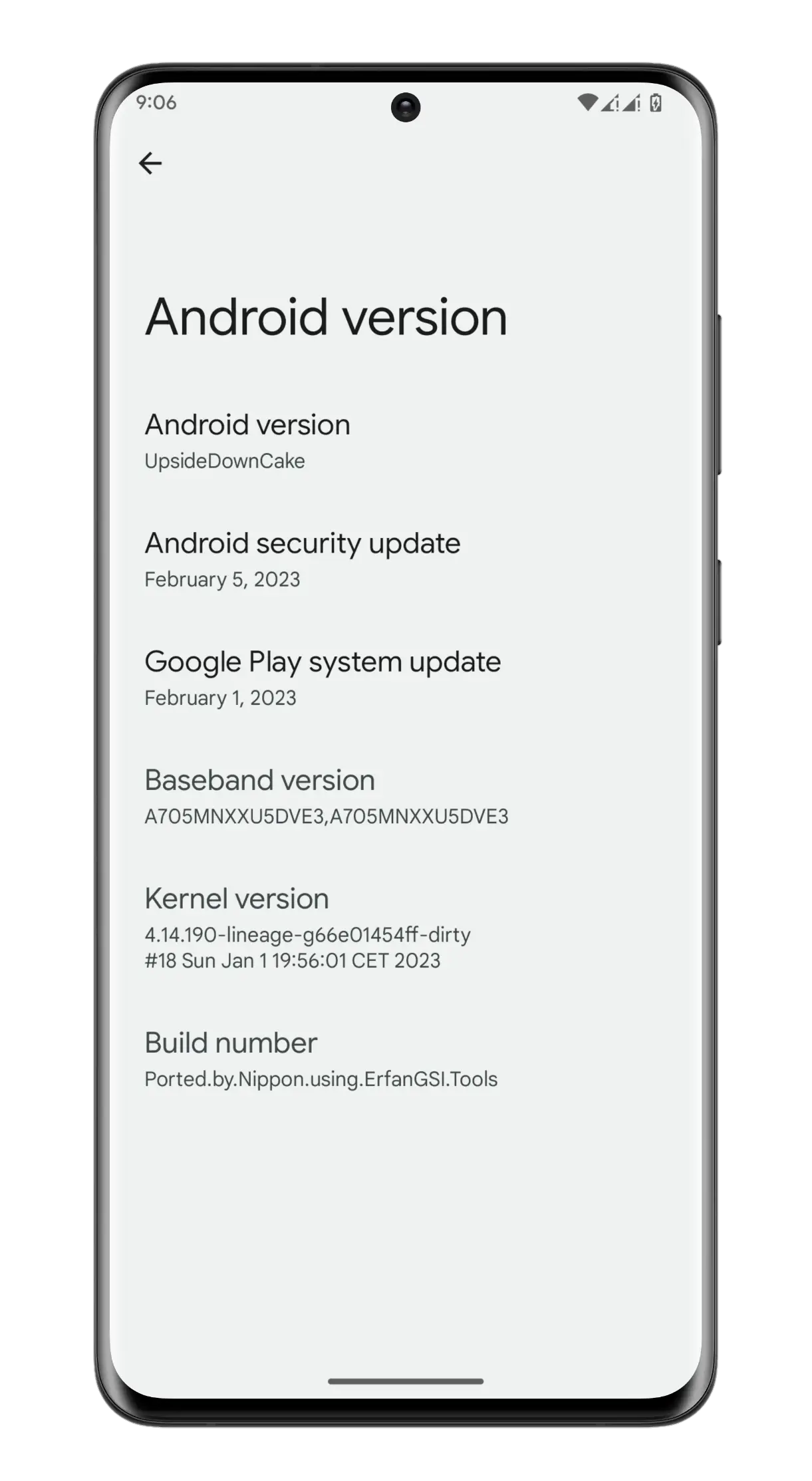
Conclusion
In conclusion, installing Android 14 on any Project Treble phone is a relatively straightforward process. Whether you choose to install it via custom recovery or fastboot commands, it is essential to ensure that your phone supports Project Treble, has an unlocked bootloader, and is equipped with the necessary software and tools.
This comprehensive guide has covered all the important steps and details to help you successfully install Android 14 on your device. If you have any problems, please feel free to comment below and I will do my best to help you.
Great guide! Excited to upgrade to Android 14 on my Project Treble phone. Thanks for the helpful instructions!
First of all i would like to say Thank you for your support with products and guidance. 🙏
– Thought on “How to Install Android 14 on any Project Treble Phone”
Thank you
Hi. When I flash the system, I get “resizing system_a” and after a while “Not enough space to resize partition”. When I change the active slot to slot b, the installation goes correctly, but after entering “fastboot reboot” the system does not start. I don’t know what to do, I have a Motorola moto g60s.